The starting point for the exhibition MEMORY GAME at Villa Lontana is a nineteenth century chest of drawers comprising numerous coloured marble samples used during the Roman Empire. The object is part of the Fondazione Santarelli Collection, which is treated as an archive to develop the curatorial projects of Villa Lontana. Each sample comes from a different quarry and location within the extended colonies of the Roman Empire: Afghanistan, Algeria, Egypt, France, Greece, Italy, Jordan, Libya, Macedonia, Spain, Syria, Tunisia and Turkey. The chest of drawers, together with the Enciclopedia dell’Arte Antica Treccani are presented in Villa Lontana’s garage space alongside works by Tauba Auerbach, Cyprien Gaillard, Susan Hiller, Thomas Hutton, John Latham, Charlotte Moth, Rosalind Nashashibi + Lucy Skaer, Olu Ogunnaike, Giorgio Orbi, Andrés Saenz de Sicilia + Emiddio Vasquez, Edoardo Servadio and Joëlle Tuerlinckx.
The chest of drawers is an object that provokes us to think about geographies and memory games in conjunction with the political, economic and geographic expansion of the ancient Roman Empire. “Those who still wander around the Palatine Hill, the Forums, the ruins of the baths and other monuments, will see small flakes and fragments of various kinds of coloured marble, standing out among the stones and the loose earth, especially after the rain. These fragments are not stones originating from the soil of Rome, but come from all parts of the Empire.” This passage comes from the seminal text Marmora Romana, written by Raniero Gnoli in 1971 after his visit to all the main places and monuments of the Mediterranean basin where there are ancient marbles, retracing the paths of Faustino Corsi.
MEMORY GAME presents different ways in which contemporary artists respond to geography, history, trade and economies: craft, tradition and re-invention, geopolitical structures and networks of power, transaction and exchange, economies and histories.
Download Press Release
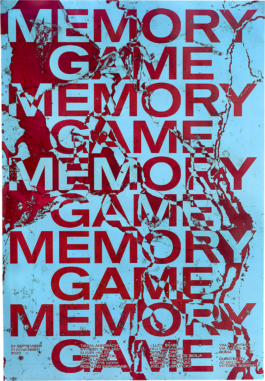
Poster 70x100cm, 250gr glossy paper, Offset
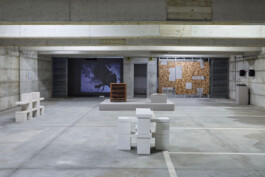
Installation view, MEMORY GAME, Villa Lontana, 24 September – 21 November 2020
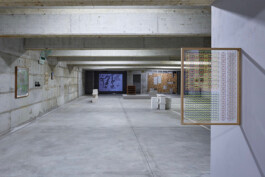
Installation view, MEMORY GAME, Villa Lontana, 24 September – 21 November 2020
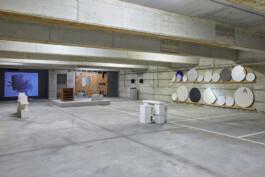
Installation view, MEMORY GAME, Villa Lontana, 24 September – 21 November 2020
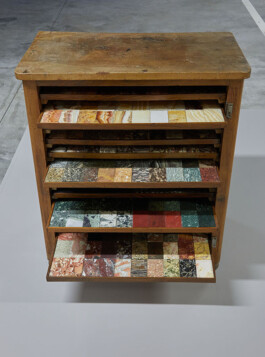
Chest of drawers (probably attributed to the Belli Brothers), XIX century 560 samples of coloured marbles, wood. Courtesy Fondazione Dino ed Ernesta Santarelli
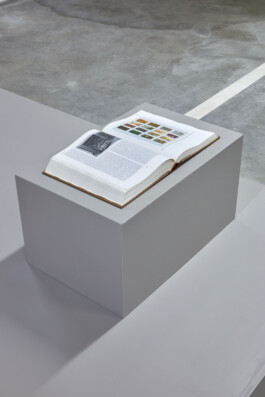
‘Enciclopedia dell’Arte Antica’, Treccani, 1995. Courtesy Fondazione Dino ed Ernesta Santarelli
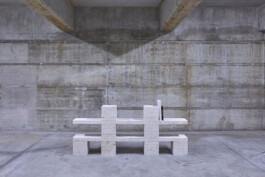
Thomas Hutton, ‘Polyglyph (Roman travertine I)’, 2020. Roman travertine. Dimensions variable (8 blocks: 24 x 25 x 27cm and 4 slabs: 27 x 100 x 6cm). Courtesy the artist and Fondazione Santarelli
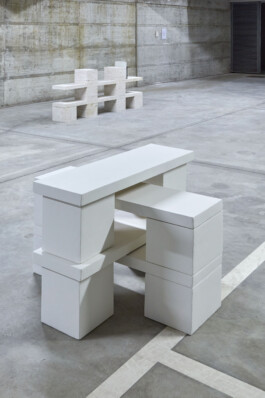
Thomas Hutton, Polyglyph (prototype II)’, 2020 ; ‘Polyglyph (Roman travertine I)’, 2020. Courtesy the artist and Fondazione Santarelli
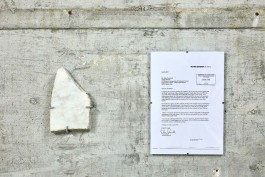
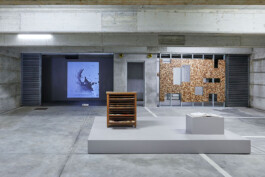
Installation view, MEMORY GAME, Villa Lontana, 24 September – 21 November 2020
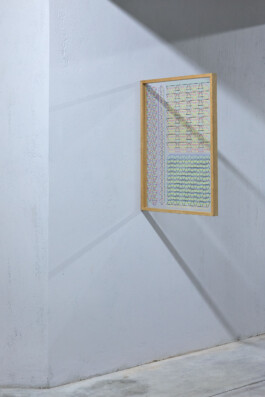
Tauba Auerbach, ’GHOST/GHOST’, 2013. Edition of 24 copies. Accompanied by a certificate signed by the artist. 9 colors silkscreened recto/verso, oak frame, clear plexiglas. Courtesy Three Star Books, Paris
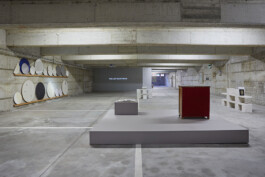
Installation view, MEMORY GAME, Villa Lontana, 24 September – 21 November 2020
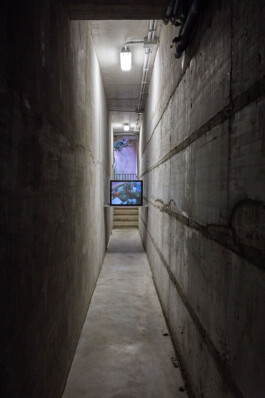
Charlotte Moth, ’excerpt’, 2020. Re-edit 2020, colour 16mm digital transfer, without sound, continuous loop. Courtesy the artist
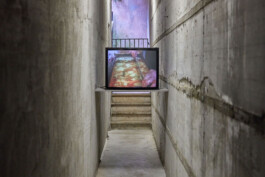
Charlotte Moth, ’excerpt’, 2020. Re-edit 2020, colour 16mm digital transfer, without sound, continuous loop. Courtesy the artist
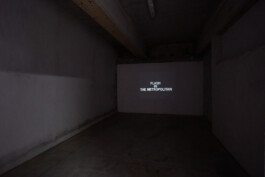
Rosalind Nashashibi + Lucy Skaer, ‘Flash in the Metropolitan’, 2006. 16 mm film, Col., Silent, 4mins. Courtesy the artist and LUX, London
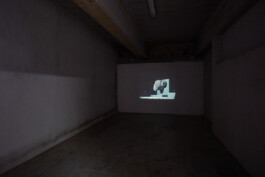
Rosalind Nashashibi + Lucy Skaer, ‘Flash in the Metropolitan’, 2006. 16 mm film. Col., Silent, 4mins. Courtesy the artist and LUX, London
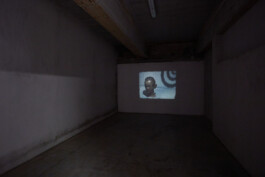
Rosalind Nashashibi + Lucy Skaer, ‘Flash in the Metropolitan’, 2006. 16 mm film. Col., Silent, 4mins. Courtesy the artist and LUX, London
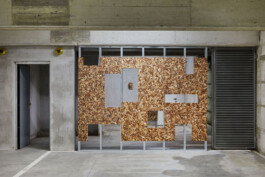
Olu Ogunnaike, ‘From one space to an/other,’ 2020 . Italian Pine, Nigerian Sapele, English Oak, French Oak, Cedar of Lebanon, American Black Walnut, English Ash, English Cherry, English Silver Birch, Italian Chestnut, American & British Maple, tree sap bio-resin, aluminium stud wall, charcoal silkscreen prints. Courtesy the artist and Fondazione Santarelli
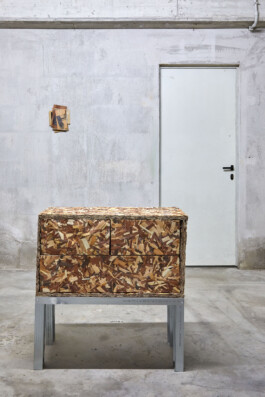
Olu Ogunnaike, ‘From one space to an/other,’ 2020. Courtesy the artist and Fondazione Santarelli
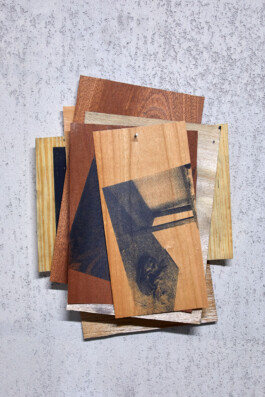
Olu Ogunnaike, ‘From one space to an/other,’ 2020. Charcoal silkscreen prints. Courtesy the artist and Fondazione Santarelli
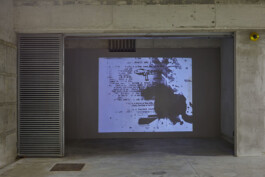
John Latham, Preliminary photographic prints for the ‘Review of a Dictionary series’, 1966 Slideshow video, 3:36 min. Courtesy Flat Time House © John Latham Foundation
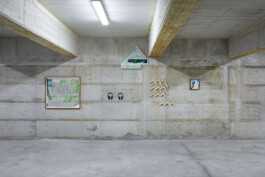
Giorgio Orbi, ‘Rete da Giardino’, 2014 ; ’MOUNTAINS’, 2020 ; ‘Marmarole’, 2014 ; ‘Lylibetano’, 2019 ; ‘Monte Pelmo’, 2017. Courtesy the artist and Galleria Alessandra Bonomo, Rome; Courtesy the artist ; Courtesy the artist and Galleria Alessandra Bonomo, Rome; Private Collection
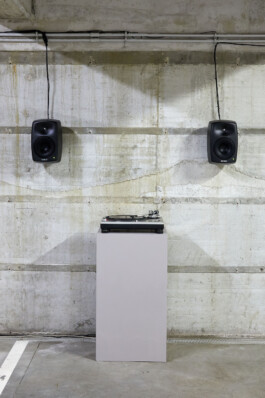
Andrés Saenz de Sicilia + Emiddio Vasquez, ’Sediment Versions (I-IX)’, 2020. Sound, 14:25. Dubplate printed on Transco lacquers from 1974. Cut at Music House, London. Produced by Villa Lontana Records, Rome
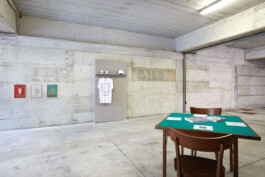
Edoardo Servadio, ‘Testaccio I’, 2020; ‘Campitelli I’, 2020; ‘Gianicolense I’, 2020; ‘'The Shop', 2020; 'Memory Game'. 2020. Courtesy the artist
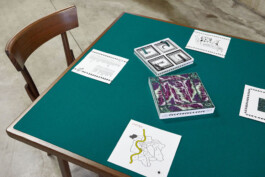
Edoardo Servadio, ‘Memory Game’, 2020. 2 sets of 57 cards. Edition of 3 (2 AC). Courtesy the artist
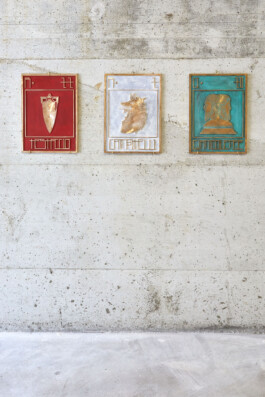
Edoardo Servadio, ‘Testaccio I’, 2020; ‘Campitelli I’, 2020; ‘Gianicolense I’, 2020. Bronze, colour patinated. Courtesy the artist
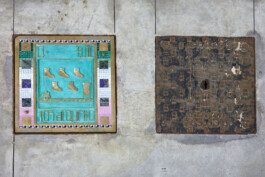
Edoardo Servadio, ’Tor di Quinto I (Villa Lontana)’, 2020. Bronze, Venetian enamels, Antique Green, Lapis, Cipollino, Sodalite. Courtesy the artist and Fondazione Santarelli
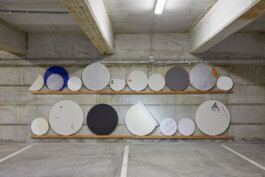
Joëlle Tuerlinckx, ‘BARREs des RONDs’, 2012/2020. Courtesy the artist and Galerie Nagel Draxler, Berlin/Colonge/Munich
The starting point for the exhibition MEMORY GAME at Villa Lontana is a nineteenth century chest of drawers comprising numerous coloured marble samples used during the Roman Empire. The object is part of the Fondazione Santarelli Collection, which is treated as an archive to develop the curatorial projects of Villa Lontana. Each sample comes from a different quarry and location within the extended colonies of the Roman Empire: Afghanistan, Algeria, Egypt, France, Greece, Italy, Jordan, Libya, Macedonia, Spain, Syria, Tunisia and Turkey. The chest of drawers, together with the Enciclopedia dell’Arte Antica Treccani are presented in Villa Lontana’s garage space alongside works by Tauba Auerbach, Cyprien Gaillard, Susan Hiller, Thomas Hutton, John Latham, Charlotte Moth, Rosalind Nashashibi + Lucy Skaer, Olu Ogunnaike, Giorgio Orbi, Andrés Saenz de Sicilia + Emiddio Vasquez, Edoardo Servadio and Joëlle Tuerlinckx.
The chest of drawers is an object that provokes us to think about geographies and memory games in conjunction with the political, economic and geographic expansion of the ancient Roman Empire. “Those who still wander around the Palatine Hill, the Forums, the ruins of the baths and other monuments, will see small flakes and fragments of various kinds of coloured marble, standing out among the stones and the loose earth, especially after the rain. These fragments are not stones originating from the soil of Rome, but come from all parts of the Empire.” This passage comes from the seminal text Marmora Romana, written by Raniero Gnoli in 1971 after his visit to all the main places and monuments of the Mediterranean basin where there are ancient marbles, retracing the paths of Faustino Corsi.
MEMORY GAME presents different ways in which contemporary artists respond to geography, history, trade and economies: craft, tradition and re-invention, geopolitical structures and networks of power, transaction and exchange, economies and histories.
Download Press Release





















Giorgio Orbi, ‘Rete da Giardino’, 2014 ; ’MOUNTAINS’, 2020 ; ‘Marmarole’, 2014 ; ‘Lylibetano’, 2019 ; ‘Monte Pelmo’, 2017. Courtesy the artist and Galleria Alessandra Bonomo, Rome; Courtesy the artist ; Courtesy the artist and Galleria Alessandra Bonomo, Rome; Private Collection






Immagine 4, 5
Courtesy Fondazione Dino ed Ernesta Santarelli
Immagine 6, 7
Courtesy Thomas Hutton and Fondazione Dino ed Ernesta Santarelli
Immagine 8
Cyprien Gaillard, ‘Untitled’, 2010, Carrara marble fragment. Courtesy Port Authority of New York and MUDAC, Carrara
Immagine 9
Courtesy Three Star Books, Paris
Immagine 10
Courtesy Port Authority of New York and MUDAC, Carrara
Immagine 12, 13
Courtesy Charlotte Moth
Immagine 14, 15,16
Courtesy Rosalind Nashashibi, Lucy Skaer and LUX, London
Immagine 17, 18, 19
Courtesy Olu Ogunnaike and Fondazione Dino ed Ernesta Santarelli
Imagine 20
Courtesy Flat Time House © John Latham Foundation
Immagine 21
Courtesy Giorgio Orbi, Galleria Alessandra Bonomo, Rome and Private Collection
Immagine 22
Courtesy Andrés Saenz de Sicilia + Emiddio Vasquez. Produced by Villa Lontana Records
Immagine 23, 24, 25, 26
Courtesy Edoardo Servadio and Fondazione Dino ed Ernesta Santarelli
Immagine 27
Courtesy Joëlle Tuerlinckx and Galerie Nagel Draxler, Berlin/Colonge/Munich
Poster
70x100cm, offset
